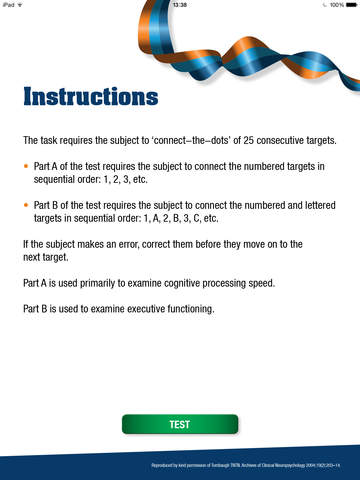
Trail Making Test app for iPhone and iPad
Developer: 10th Planet Digital Media
First release : 22 Aug 2013
App size: 0 Bytes
The Trail Making Test is a Neuropsychological test consisting of two parts, A and B,
designed to assess a subject’s visual attention and task switching ability.*
Part A tests cognitive processing speed. The subject has to consecutively connect the
numerical points accurately, in ascending order, from 1 to 25 as quickly as possible,
i.e., 1, 2, 3 etc.
Part B tests executive functioning. The subject has to consecutively connect both
numerical and alphabetical points accurately, in ascending order as quickly as
possible. i.e., 1, A, 2, B, 3, C, etc.
The purpose of the test is to ascertain an overall time for completing both parts and
gain information about:
• Visual search speed
• Scanning
• Speed of processing
• Mental flexibility
• Executive functioning
* Tombaugh, T.N.T.N (2004). "Trail Making test A and B: Normative Data Stratified by Age and Education". Archives of Clinical Neuropsychology : The Official Journal of the National Academy of Neuropsychologists 19 (2): 203–214. Retrieved 2012‐01‐10.



